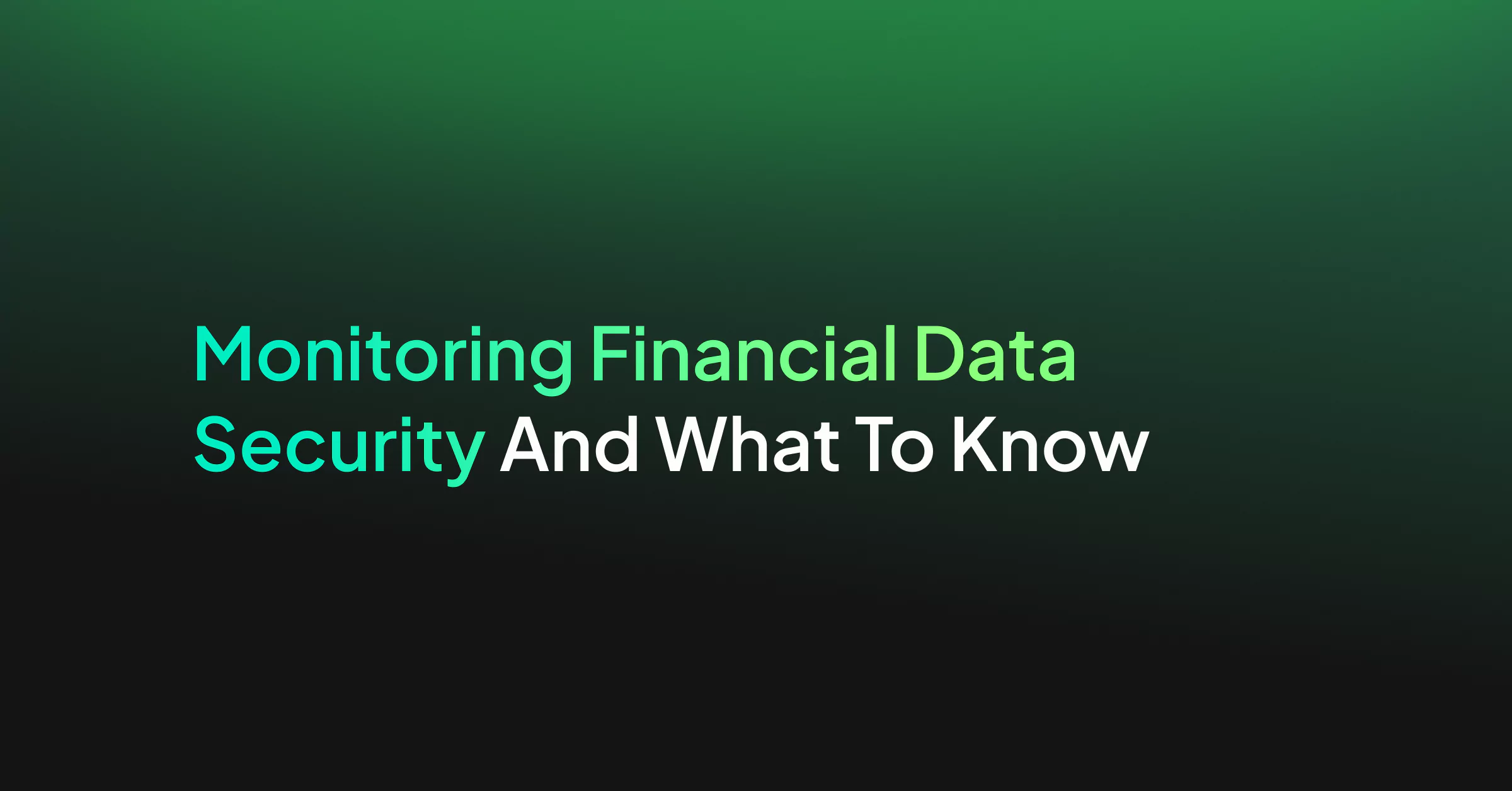Monitoring Financial Data Security And What To Know

The Fintech industry deals with financial and personal data of customers on a massive scale. From credit card transactions to identity verification details, companies collect and process huge amounts of sensitive data, making them an attractive target for cybercriminals.
To ensure the highest standards of data protection and risk management, constant monitoring and analysis of security data is crucial. In this article, we’ll look at financial data security, the challenges encountered when trying to monitor this type of data, and how having a complete observability platform can help.
The importance of data security
Monitoring financial data is critical for fintech companies to effectively manage their security risks. Here are a few other reasons to monitor security data:
- Detecting and preventing data breaches
Hackers and cybercriminals are constantly evolving their technique. For instance, in 2022, researchers reported a malware called Fakecalls, that could talk to victims and pretend to be a bank employee.
Fintech companies must stay up-to-date on all these attack methods and monitor their systems closely for any suspicious activity. Backed up an observability platform, having a strong security infrastructure and constant monitoring are the only ways to stay ahead of evolving cyber attacks.
- Identifying vulnerabilities
Over 46% of mobile apps, according to fintech data, deal with vulnerability problems. Analyzing security data allows companies to identify weaknesses or vulnerabilities like outdated infrastructure or unencrypted data. Once identified, the gaps in the systems are patched to strengthen security.
- Maintaining compliance
Financial firms are required by many regulations, such as PCI DSS and GDPR, to monitor their systems and networks for security issues and retain log data for a certain time period. Failure to comply with these regulations can result in significant fines and loss of customer trust.
Through close analysis of logs and audit trails, fintech companies can ensure they comply with all relevant regulations.
- Protecting sensitive customer data
Companies often handle significant amounts of financial and personal information, often for high-value customers like hedge funds or institutional investors. By monitoring their data and systems for any unauthorized access attempts, Fintech companies can prevent customer data from falling into the wrong hands.
4 challenges in monitoring financial data security
1. Legacy systems and siloed data
Legacy banking systems that are not built with modern cybersecurity practices in mind, often lack robust logging and auditing capabilities. Getting a holistic, real-time view of unauthorized access attempts or transactional activity across accounts is often difficult with outdated systems.
Additionally, legacy security tools, fraud detection systems and data loss prevention methods often operate in isolation, creating silos of customer data, transaction records, and account profiles. These data silos may not integrate with a central security information and event management (SIEM) system, resulting in blind spots or a fragmented view of customer behaviors and risk profiles.
2. Volume and complexity of data
Global instant transactions are expected to exceed $235 billion in value by 2027. Monitoring hundreds of thousands of daily transactions amounting to billions in value strains their ability to detect threats in time.
Financial data is often complex, which makes it difficult for traditional security systems to contextualize the information and extract risk indicators. Without these risk indicators, companies may not recognize incidents before major losses occur.
3. Lack of visibility
Silos between numerous data sources can prevent fintech companies from getting a holistic view of risk across their systems. To detect fraud, money laundering, or other cyberthreats in real-time, companies need visibility into all financial transactions.
Without this, they rely on partial and fragmented indicators from individual data sources, leaving them reactive rather than proactive in addressing security issues.
4. False positives
When detection systems wrongly flag legitimate activities as fraud, customers face unnecessary friction such as fund holds or transaction declines. Investigating every false positive diverts resources from real threats.
False positives have a particular business impact on companies because delays in financial services can quickly erode customer trust, goodwill, and revenue. They also undermine a fintech organization’s promises of convenience and speed.
4 solutions to financial data security challenges
1. Implement observability
Observability gives fintech companies the visibility required to detect issues before impacting customers or incurring losses. Observability can extract deep semantic context from massive payment data, transactions, and logs to reveal connections between entities like customers and accounts.
Coralogix’s full-stack observability dashboard provides a centralized system to ingest and analyze huge volumes of security data across a data ecosystem. Coralogix’s machine learning and dynamic alerting features detect anomalies, spot threats, and provide visibility into systems. Armed with a powerful observability tool, companies overcome the challenges of data volume, detecting anomalies, and false positives.
2. Data normalization
Data normalization programs transform the diverse data formats companies acquire from multiple sources into a common format. The data goes through steps such as data classification, standardizing codes and values, de-duplication of records, and referential integrity checks.
The normalized data form a single version of truth around elements like customers, accounts, and transactions. Fintech security systems can use this data to correlate information, establish baselines and calculate risk metrics that indicate threats and anomalies.
3. Integration of legacy systems
Properly integrating legacy financial systems can help companies break down data silos, providing a single source of truth and enabling real-time visibility across the entire IT environment. With all relevant financial data seamlessly integrated, regardless of source or format, companies can create a centralized, real-time view of data residing in legacy and modern systems.
As soon as data is created in any source system, it becomes available across the system. This centralized approach gives security teams a holistic view of risks related to customers, accounts, transactions and fraud.
4. Machine learning algorithms
Machine learning algorithms trained on large financial datasets can help FinTech companies detect anomalies and threats. Fraud detection systems powered by AI or ML algorithms, according to a 2023 report, are estimated to reduce investigation times by 70%, while increasing accuracy by 90%.
Fintech companies can train ML models on historical transaction records, customer behavior patterns, entity relationships, and other indicators. These models can then be used to detect fraudulent activities, suspicious account takeovers, money laundering patterns, and other cyber threats in near real-time.
Mastercard’s Decision Intelligence (DI) technology, for example, analyzes historical transaction data from customers with ML algorithms to detect credit card fraud. Python for finance is also gaining a lot of interest. Libraries like Numpy and Pandas also allow FinTech data scientists to create customized ML models. These models can extract nuanced risk signals from the continuous churn of financial transactions and data.




